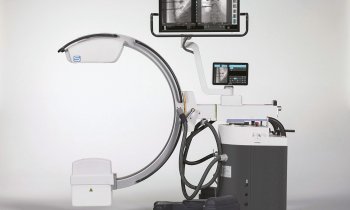'Smart' patient monitoring needed to improve workflow
In the operating room, a surgeon typically is surrounded by 11 different medical devices, « and they all keep beeping at us, » complains Dr. Martin Schuster at Charité University Hospital in Berlin. «Which one of these alarms is important, » he asks, adding that blood pressure, oxygen saturation and ventillator alerts can sound between 10 and 12 times during each case.
«We need smart alarms, and I know that some manufacturers are sensitive to this problem, but it is really a work-in-progress.» he said.
For example, loud alarms are effective, but only for being turned off more quickly, not because the information is more important. Adding a rising tone for an alarm according to the severity of the patient condition would be smarter, he said.
As for visual alarms, a blinking light is difficult to notice these days when everyting is flashing, but a more useful visual is a graphic display showing a clinician the critical state in relation to the past few minutes.
Responsible for five ORs at Charité Hospital, Dr. Schuster led a presentation on « Patient Monitoring : Friend or Foe of OR Workflow, » at MEDICA Nov 18.
His key theme was the challenge that complexity in the OR presents for productivity, and ultimately for patient safety. « We counted 81 diferent types of medical devices in the Charité OR, » he said, including 15 anesthesia machines, 9 respirators, 16 infusion pumps and 13 cardiovascular monitoring devices, all from different manufacturers.
Yet for any given type of device, the downtime in OR was found to be an average of 40%. Devices dedicated to a single location and the redundancy among devices are two areas where this problems needs to be addressed, he said. Dr. Schuster asks why a patient can not be continually monitored, for example, by the same device throughout the perioperative pathway, a device that is as transportable as the patient.
Integration of devices with hospital information systems would also help anwser the most frequently asked question in the OR, « Where is the next patient? »
Just over 14% of OR time is unused, and half of this is because we do not know where the patient is located, at what state the patient is in preparation., » he said. « Since the patient is connected to a patient monitor in these spaces, why can we not know from this monitor the location and the patient's status? » asks Dr. Schuster. Sometimes it would allow us to improve workflow. Or sometimes it simply would let us know that we can take a break for 15 minutes. »
18.11.2009










